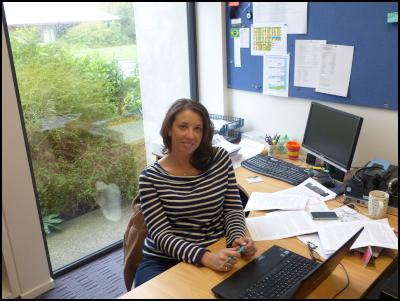Consider Christchurch Culture When Designing CBD
Consider Christchurch Culture When Designing CBD
“Beautiful CBD spaces with poor microclimates will be empty most of the year, as will spaces with great microclimates but used in the wrong way.”
That’s according to Lincoln University PhD candidate, Silvia Tavares, who warns that resuscitating Christchurch’s city centre means not only designing effective microclimates, but ones which factor in how Cantabrians actually use open public spaces.

Ms Tavares recently submitted her PhD thesis on microclimates and urban comfort in Christchurch and has returned from six months in Aachen, Germany, where she was researching how the concept applies to a culturally-mixed environment.
Microclimates refer to the actual biophysical aspects of an urban space, such as its thermal comfort; whereas urban comfort, while factoring in microclimates, looks at how people of particular cities and countries culturally adapt or relate to their urban spaces, taking into account their preferences and traditions.
“It’s not enough to merely quantify microclimates because the meaning of urban comfort has cultural associations,” says Ms Tavares. “You can crunch the numbers around such things as wind speed and air temperature, but urban design must consider the unique preferences of the people in the place.”
Ms Tavares says Christchurch risks getting the CBD rebuild wrong by not considering the ‘how we live’ and ‘who we are’ aspects of Christchurch and Cantabrians.
“There’s been a lot of talk about making the Christchurch CBD vibrant, but we need to be careful with what we mean by that. You can’t necessarily just manufacture a downtown Melbourne or Madrid, and research suggests that that’s not what people who choose to live in Christchurch necessarily want anyway.”
Her research highlighted factors such as a connection with geophysical landscapes, relationships with gardens and gardening, and the sense of a connection to the country as key aspects of the Christchurch cultural make-up.
“Physical landscapes in and around Christchurch allow for types of activities which go on to influence both local identity and the preferences Cantabrians have with regard to the urban environment.
“This may explain the struggle Christchurch has traditionally had to vitalise the CBD even before the earthquakes. It may not be all about the suburban mall, as has often been suggested.
“The Garden City way of living has been an important feature of Christchurch for over a century. This implies social environments being integrated with natural surroundings and explains why higher density initiatives have not been well-received.”
Ms Tavares draws comparisons with Wellington, which, while having a lower population than Christchurch, has a greater hustle-and-bustle feel on account of higher density housing. However, this is not an environment that people in Christchurch necessarily want to live in.
“Low density environments are such a strong Christchurch characteristic, and that is why many people choose to live here.
“We shouldn’t just assume that Cantabrians on the whole want the big city conception of ‘vibrant’. However, while many people have argued that the CBD ought to be so, the preferred choice of housing will be influenced by the city’s identity.
“If anything, in Christchurch this seems to favour more of an ‘escape’ from urbanity, which has translated into housing that allows access to the outdoors, even if this just means a private backyard.”
Ms Tavares argues that the term ‘vibrant’ must have a Christchurch-specific meaning.
“My research suggests that success in drawing people in to the CBD to live or for recreation should look to focus around variation with regard to the urban spaces; providing both social and retreat areas, and focusing on the different needs of different types of lifestyles and age groups.
“Moreover, geographic features such as the parks or the river have to be utilised to provide both an interesting feature sufficient to generate social spaces as well as peaceful areas which provide enough personal space for people who require it.
“If there is a need for higher density apartment buildings, they should probably consider the needs of the kind of people who choose to live in those areas and the cultural preferences of the wider community. In the case of Christchurch, successful apartment living might still entail ready access to outdoor areas,” she says.
ENDS


 Business Canterbury: Urges Council To Cut Costs, Not Ambition For City
Business Canterbury: Urges Council To Cut Costs, Not Ambition For City Wellington Airport: On Track For Net Zero Emissions By 2028
Wellington Airport: On Track For Net Zero Emissions By 2028 Landcare Research: ANZAC Gall Fly Release Promises Natural Solution To Weed Threat
Landcare Research: ANZAC Gall Fly Release Promises Natural Solution To Weed Threat NZ Anti-Vivisection Society: Auckland Rat Lovers Unite!
NZ Anti-Vivisection Society: Auckland Rat Lovers Unite! University of Canterbury: $1.35 Million Grant To Study Lion-like Jumping Spiders
University of Canterbury: $1.35 Million Grant To Study Lion-like Jumping Spiders Federated Farmers: Government Ends War On Farming
Federated Farmers: Government Ends War On Farming



